6.1. Two layers. The stellation process can be applied not only to the Platonic and Archimedean solids, but also to the duals of these solids. In some cases we will end up with a combination of two objects for example, starting with the octahedron the result of the stellation process will be a combination of two tetrahedra as in M.C. Escher’s “Double Planetoid” [1]. In other cases it will lead to one complete object. The outcome depends on the number of faces that meet at each vertex. When this number is even as in the octahedron (4 triangles in every vertex) then the result will be a combination of two objects. When this number is odd the result will be one double-layered object. The following examples are derived from the rhombic dodecahedron (Figures 32 and 35), the dual of the snub cube (Figures 33 and 36) and from the rhombic triacontahedron (Figures 34 and 37).

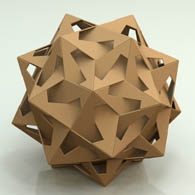

Figure 32: Base: rhombic dodecahedron
Figure 33: Base: snub cube
Figure 34: Base: rhombic triacontahedron

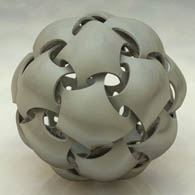

Figure 35: Base: rhombic dodecahedron
Figure 36: Base: snub cube
Figure 37: Base: rhombic triacontahedron
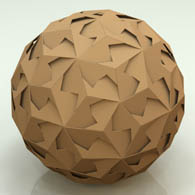
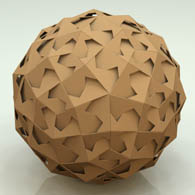
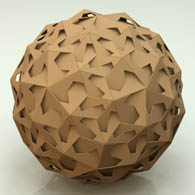
Figure 38: Star: 60 faces a
Figure 39: Star: 60 faces b
Figure 40: Star: 60 faces c
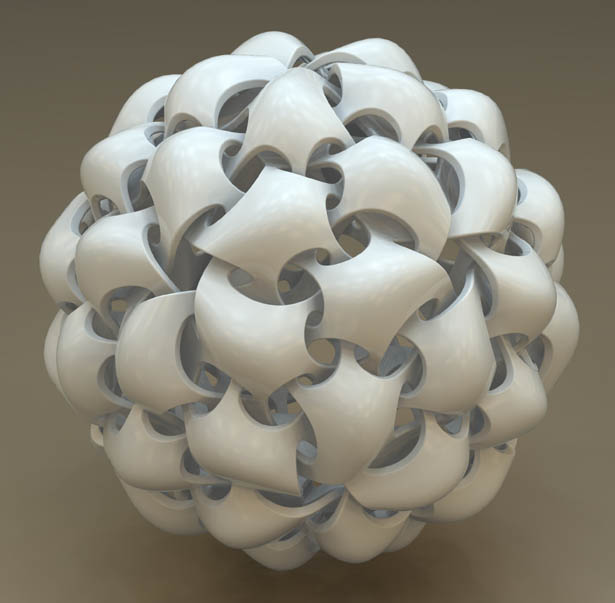
Figure 41: Base: dual of the snub dodecahedron